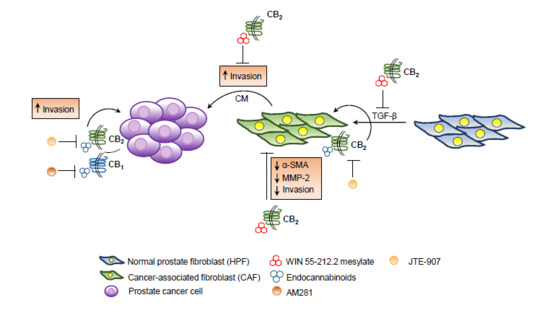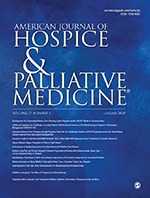 “Drugs selectively targeting CB2 hold promise for treating neurodegenerative disorders, inflammation, and pain while avoiding psychotropic side effects mediated by CB1. The mechanisms underlying CB2 activation and signaling are poorly understood but critical for drug design. Here we report the cryo-EM structure of the human CB2-Gi signaling complex bound to the agonist WIN 55,212-2. The 3D structure reveals the binding mode of WIN 55,212-2 and structural determinants for distinguishing CB2 agonists from antagonists, which are supported by a pair of rationally designed agonist and antagonist. Further structural analyses with computational docking results uncover the differences between CB2 and CB1 in receptor activation, ligand recognition, and Gi coupling. These findings are expected to facilitate rational structure-based discovery of drugs targeting the cannabinoid system.”
“Drugs selectively targeting CB2 hold promise for treating neurodegenerative disorders, inflammation, and pain while avoiding psychotropic side effects mediated by CB1. The mechanisms underlying CB2 activation and signaling are poorly understood but critical for drug design. Here we report the cryo-EM structure of the human CB2-Gi signaling complex bound to the agonist WIN 55,212-2. The 3D structure reveals the binding mode of WIN 55,212-2 and structural determinants for distinguishing CB2 agonists from antagonists, which are supported by a pair of rationally designed agonist and antagonist. Further structural analyses with computational docking results uncover the differences between CB2 and CB1 in receptor activation, ligand recognition, and Gi coupling. These findings are expected to facilitate rational structure-based discovery of drugs targeting the cannabinoid system.”
Category Archives: THC (Delta-9-Tetrahydrocannabinol)
Activation and Signaling Mechanism Revealed by Cannabinoid Receptor-Gi Complex Structures.
 “Human endocannabinoid systems modulate multiple physiological processes mainly through the activation of cannabinoid receptors CB1 and CB2. Their high sequence similarity, low agonist selectivity, and lack of activation and G protein-coupling knowledge have hindered the development of therapeutic applications. Importantly, missing structural information has significantly held back the development of promising CB2-selective agonist drugs for treating inflammatory and neuropathic pain without the psychoactivity of CB1. Here, we report the cryoelectron microscopy structures of synthetic cannabinoid-bound CB2 and CB1 in complex with Gi, as well as agonist-bound CB2 crystal structure. Of important scientific and therapeutic benefit, our results reveal a diverse activation and signaling mechanism, the structural basis of CB2-selective agonists design, and the unexpected interaction of cholesterol with CB1, suggestive of its endogenous allosteric modulating role.”
“Human endocannabinoid systems modulate multiple physiological processes mainly through the activation of cannabinoid receptors CB1 and CB2. Their high sequence similarity, low agonist selectivity, and lack of activation and G protein-coupling knowledge have hindered the development of therapeutic applications. Importantly, missing structural information has significantly held back the development of promising CB2-selective agonist drugs for treating inflammatory and neuropathic pain without the psychoactivity of CB1. Here, we report the cryoelectron microscopy structures of synthetic cannabinoid-bound CB2 and CB1 in complex with Gi, as well as agonist-bound CB2 crystal structure. Of important scientific and therapeutic benefit, our results reveal a diverse activation and signaling mechanism, the structural basis of CB2-selective agonists design, and the unexpected interaction of cholesterol with CB1, suggestive of its endogenous allosteric modulating role.”
Cannabinoids in the descending pain modulatory circuit: Role in inflammation.
 “The legalization of cannabis in some states has intensified interest in the potential for cannabis and its constituents to lead to novel therapeutics for pain.
“The legalization of cannabis in some states has intensified interest in the potential for cannabis and its constituents to lead to novel therapeutics for pain.
Our understanding of the cellular mechanisms underlying cannabinoid actions in the brain have lagged behind opioids; however, the current opioid epidemic has also increased attention on the use of cannabinoids as alternatives to opioids for pain, especially chronic pain that requires long-term use.
Endogenous cannabinoids are lipid signaling molecules that have complex roles in modulating neuronal function throughout the brain.
In this review, we discuss cannabinoid functions in the descending pain modulatory pathway, a brain circuit that integrates cognitive and emotional processing of pain to modulate incoming sensory inputs. In addition, we highlight areas where further studies are necessary to understand cannabinoid regulation of descending pain modulation.”
https://www.ncbi.nlm.nih.gov/pubmed/32004514
https://www.sciencedirect.com/science/article/abs/pii/S0163725820300231?via%3Dihub
Marijuana use and coronary artery disease in young adults.
 “This study aims to determine the frequency of coronary artery disease among young to middle aged adults presenting with chest pain who currently use marijuana as compared to nonusers.
“This study aims to determine the frequency of coronary artery disease among young to middle aged adults presenting with chest pain who currently use marijuana as compared to nonusers.
Only 6.8% of the 146 marijuana users had evidence of coronary artery disease on coronary CT angiography. In comparison, the rate was 15.0% among the 1,274 marijuana nonusers.
A majority of marijuana users were younger than nonusers and had a lower frequency of hypertension and diabetes than nonusers.
There was no statistical difference in lipid panel values between the two groups.
CONCLUSION:
Among younger patients being evaluated for chest pain, self-reported cannabis use conferred no additional risk of coronary artery disease as detected on coronary CT angiography.”
https://www.ncbi.nlm.nih.gov/pubmed/31995626
“There is no association between marijuana use and the presence of coronary artery disease on coronary CT angiography in young to middle aged patients presenting with chest pain.”
https://journals.plos.org/plosone/article?id=10.1371/journal.pone.0228326
Treatment with Cannabinoids as a Promising Approach for Impairing Fibroblast Activation and Prostate Cancer Progression.
 “Endo-, phyto- and synthetic cannabinoids have been proposed as promising anti-cancer agents able to impair cancer cells’ behavior without affecting their non-transformed counterparts.
“Endo-, phyto- and synthetic cannabinoids have been proposed as promising anti-cancer agents able to impair cancer cells’ behavior without affecting their non-transformed counterparts.
However, cancer outcome depends not only on cancer cells’ activity, but also on the stromal cells, which coevolve with cancer cells to sustain tumor progression.
Here, we show for the first time that cannabinoid treatment impairs the activation and the reactivity of cancer-associated fibroblasts (CAFs), the most represented stromal component of prostate tumor microenvironment.
Overall, our data strongly support the use of cannabinoids as anti-tumor agents in prostate cancer, since they are able to simultaneously strike both cancer and stromal cells.”
https://www.ncbi.nlm.nih.gov/pubmed/31991773
https://www.mdpi.com/1422-0067/21/3/787

Impact of Cannabinoids on Symptoms of Refractory Gastroparesis: A Single-center Experience.
“Cannabinoids are increasingly used for medicinal purposes, including neuropathy.
Gastroparesis is a neuromuscular disorder and neuropathy plays a large role in its pathogenesis. It is thus reasonable that cannabinoids can serve a beneficial role in the management of gastroparesis.
Our study evaluates the effect of cannabinoids on gastroparesis symptoms.
A significant improvement in the GCSI total symptom composite score was seen with either cannabinoid treatment (mean score difference of 12.8, 95% confidence interval 10.4-15.2; p-value < 0. 001). Patients prescribed marijuana experienced a statistically significant improvement in every GCSI symptom subgroup. Significant improvement in abdominal pain score was also seen with either cannabinoid treatment (mean score difference of 1.6; p-value <0.001).
Conclusions: Cannabinoids dramatically improve the symptoms of gastroparesis. Furthermore, an improvement in abdominal pain with cannabinoids represents a breakthrough for gastroparesis-associated abdominal pain treatment, for which there are currently no validated therapies.”
https://www.ncbi.nlm.nih.gov/pubmed/31993268
“In conclusion, cannabinoids dramatically improve refractory gastroparesis symptoms, including abdominal pain. Marijuana may be superior to dronabinol in improving these symptoms, though both cannabinoids seem to be promising as novel therapeutic options in gastroparesis.”
Tetrahydrocannabinol and Cannabidiol Use in an Outpatient Palliative Medicine Population.
 “Palliative medicine physicians are challenged by lack of guidance regarding effectiveness and dosing of cannabis products in the setting of their emerging popularity.
“Palliative medicine physicians are challenged by lack of guidance regarding effectiveness and dosing of cannabis products in the setting of their emerging popularity.
OBJECTIVE:
The aim of this study was to describe early patterns of tetrahydrocannabinol (THC) and cannabidiol (CBD) use in Florida following passage of the state’s first medical marijuana law. We describe here the perceived benefits, side effects, and beliefs expressed by patients in a single outpatient academic palliative medicine practice.
RESULTS:
In all, 24% (14/58) of respondents reported THC use, with half using THC on a daily basis. Patients reported improvements in pain, appetite, and nausea. In all, 71% (10/14) began using THC after the diagnosis of their chronic illness, and the most common form of usage was vaping. In all, 24% (14/58) of patients reported CBD use. Patients reported improvements in pain, and the most common form of usage was topical application. None of the patients had used CBD prior to the onset of their chronic illness. In all, 21% (3/14) of THC users and 21% (3/14) of CBD users thought that their substance was helping to cure their illness. Individual reported side effects in both groups were minimal.
CONCLUSIONS:
Approximately a quarter of outpatient palliative care patients use THC or CBD, often on a daily basis. Palliative care providers should be aware of the frequency, diverse usage, and beliefs behind cannabis product use in this patient population.”
Phytocannabinoids in Neurological Diseases: Could They Restore a Physiological GABAergic Transmission?
 “γ-Aminobutyric acid type A receptors (GABAARs) are the main inhibitory mediators in the central nervous system (CNS). GABAARs are pentameric ligand gated ion channels, and the main subunit composition is usually 2α2βγ, with various isotypes assembled within a set of 19 different subunits. The inhibitory function is mediated by chloride ion movement across the GABAARs, activated by synaptic GABA release, reducing neuronal excitability in the adult CNS. Several studies highlighted the importance of GABA-mediated transmission during neuro-development, and its involvement in different neurological and neurodevelopmental diseases, from anxiety to epilepsy. However, while it is well known how different classes of drugs are able to modulate the GABAARs function (benzodiazepines, barbiturates, neurosteroids, alcohol), up to now little is known about GABAARs and cannabinoids interaction in the CNS. Endocannabinoids and phytocannabinoids are lately emerging as a new class of promising drugs for a wide range of neurological conditions, but their safety as medication, and their mechanisms of action are still to be fully elucidated. In this review, we will focus our attention on two of the most promising molecules (Δ9-tetrahydrocannabinol; Δ9-THC and cannabidiol; CBD) of this new class of drugs and their possible mechanism of action on GABAARs.”
“γ-Aminobutyric acid type A receptors (GABAARs) are the main inhibitory mediators in the central nervous system (CNS). GABAARs are pentameric ligand gated ion channels, and the main subunit composition is usually 2α2βγ, with various isotypes assembled within a set of 19 different subunits. The inhibitory function is mediated by chloride ion movement across the GABAARs, activated by synaptic GABA release, reducing neuronal excitability in the adult CNS. Several studies highlighted the importance of GABA-mediated transmission during neuro-development, and its involvement in different neurological and neurodevelopmental diseases, from anxiety to epilepsy. However, while it is well known how different classes of drugs are able to modulate the GABAARs function (benzodiazepines, barbiturates, neurosteroids, alcohol), up to now little is known about GABAARs and cannabinoids interaction in the CNS. Endocannabinoids and phytocannabinoids are lately emerging as a new class of promising drugs for a wide range of neurological conditions, but their safety as medication, and their mechanisms of action are still to be fully elucidated. In this review, we will focus our attention on two of the most promising molecules (Δ9-tetrahydrocannabinol; Δ9-THC and cannabidiol; CBD) of this new class of drugs and their possible mechanism of action on GABAARs.”
Allosteric Cannabinoid Receptor 1 (CB1) Ligands Reduce Ocular Pain and Inflammation.
 “Cannabinoid receptor 1 (CB1) activation has been reported to reduce transient receptor potential cation channel subfamily V member 1 (TRPV1)-induced inflammatory responses and is anti-nociceptive and anti-inflammatory in corneal injury.
“Cannabinoid receptor 1 (CB1) activation has been reported to reduce transient receptor potential cation channel subfamily V member 1 (TRPV1)-induced inflammatory responses and is anti-nociceptive and anti-inflammatory in corneal injury.
We examined whether allosteric ligands, can modulate CB1 signaling to reduce pain and inflammation in corneal hyperalgesia.
Corneal hyperalgesia was generated by chemical cauterization of cornea in wildtype and CB2 knockout (CB2-/-) mice. The novel racemic CB1 allosteric ligand GAT211 and its enantiomers GAT228 and GAT229 were examined alone or in combination with the orthosteric CB1 agonist Δ8-tetrahydrocannabinol (Δ8-THC). Pain responses were assessed following capsaicin (1 µM) stimulation of injured corneas at 6 h post-cauterization. Corneal neutrophil infiltration was also analyzed. GAT228, but not GAT229 or GAT211, reduced pain scores in response to capsaicin stimulation.
Combination treatments of 0.5% GAT229 or 1% GAT211 with subthreshold Δ8-THC (0.4%) significantly reduced pain scores following capsaicin stimulation. The anti-nociceptive effects of both GAT229 and GAT228 were blocked with CB1 antagonist AM251, but remained unaffected in CB2-/- mice. Two percent GAT228, or the combination of 0.2% Δ8-THC with 0.5% GAT229 also significantly reduced corneal inflammation.
CB1 allosteric ligands could offer a novel approach for treating corneal pain and inflammation.”
The effect of orally administered dronabinol on optic nerve head blood flow in healthy subjects- a randomized clinical trial.
 “It has been hypothesized that besides its intraocular pressure (IOP) lowering potential, tetrahydrocannabinol (THC) may also improve ocular hemodynamics.
“It has been hypothesized that besides its intraocular pressure (IOP) lowering potential, tetrahydrocannabinol (THC) may also improve ocular hemodynamics.
The aim of the present study was to investigate whether single oral administration of dronabinol, a synthetic THC, alters optic nerve head blood flow (ONHBF) and its regulation in healthy subjects.
The study was carried out in a randomized, placebo-controlled, double-masked, two-way crossover design in twenty-four healthy subjects. For each study participant, two study days were scheduled, on which they either received capsules containing 5mg dronabinol or placebo. ONHBF was measured with laser Doppler flowmetry at rest and while the study participants performed isometric exercise for six minutes to increase mean arterial blood pressure (MAP). This was repeated one hour after drug intake. Ocular perfusion pressure (OPP) was calculated as 2/3MAP-IOP.
Dronabinol was well tolerated and no cannabinoid-related psychoactive effects were reported.
Neither administration of dronabinol nor placebo had an effect on IOP, MAP or OPP. In contrast, dronabinol significantly increased ONHBF at rest by 9.5±8.1% whereas placebo did not show a change in ONHBF (0.3±7.4% vs. baseline, p<0.001 between study days). Dronabinol did not alter the autoregulatory response of ONHBF to isometric exercise.
In conclusion, the present data indicate that low dose dronabinol increases ONHBF in healthy subjects without affecting IOP, OPP or inducing psychoactive side effects. In addition, dronabinol does not alter the autoregulatory response of ONHBF to an experimental increase in OPP. Further studies are needed to investigate whether this effect can also be observed in glaucoma patients.”
https://www.ncbi.nlm.nih.gov/pubmed/31977076
https://ascpt.onlinelibrary.wiley.com/doi/abs/10.1002/cpt.1797
